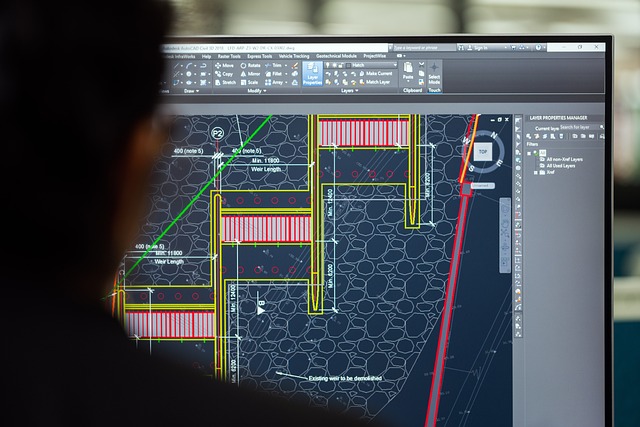127.0.0.1:49342 In the realm of computer networking, IP (Internet Protocol) addresses are fundamental components. IP addresses identify devices on a network, enabling communication. Each device gets a unique identifier, whether local or Internet-connected. There are two versions of IP addresses: IPv4 and IPv6. The former uses a 32-bit address scheme allowing for approximately 4.3 billion unique addresses, while the latter uses a 128-bit scheme providing a virtually limitless number of addresses.
The Concept of Localhost and Loopback Addresses

Among the various IP addresses, 127.0.0.1:49342 holds a special place. The “localhost” address, a loopback, allows a computer to send network traffic to itself for testing and development purposes. 127.0.0.0 to 127.255.255.255 is reserved for loopback purposes. Loopback addresses facilitate testing and development by enabling network interfaces to be tested without requiring physical connections or networks.
Understanding Ports and Their Significance
To facilitate communication, IP addresses are paired with ports. A port is a logical construct that identifies a specific process or type of network service. Ports range from 0 to 65535; 0-1023 are for well-known services, 1024-65535 for dynamic/private use. For example, HTTP traffic typically uses port 80, while HTTPS traffic uses port 443.
The Specific Case of 127.0.0.1:49342
The notation 127.0.0.1:49342 combines the loopback IP address with a specific port number. This combination is used to reference a local service running on port 49342 of the localhost. Understanding this specific address and port combination requires a deeper dive into the concepts of local services, port assignments, and their practical applications.
Applications and Use Cases
Software Development and Testing
Developers often use 127.0.0.1 in conjunction with various port numbers to test software applications locally. For example, a web developer might run a local web server on 127.0.0.1:49342 to test a web application before deploying it to a live environment. This setup allows for rapid testing and debugging without the need for a live server.
Database Management
Database administrators use loopback addresses to manage databases. During configuration or troubleshooting, a database server might be accessed at 127.0.0.1:49342, as an example of local connection. This ensures that the database service is only accessible from the local machine, enhancing security during maintenance tasks.
Network Troubleshooting
Network engineers utilize loopback addresses to troubleshoot and diagnose network issues. By sending traffic to 127.0.0.1, they can verify that the network stack on a machine is functioning correctly. Tools like ping and traceroute can be used to test the loopback address.
Local Service Access
Various local services such as development servers, local proxies, and custom applications often run on localhost with dynamic port numbers like 49342. This ensures that these services are only accessible from the local machine, providing a secure and isolated environment for various tasks.
Security Considerations
While using 127.0.0.1 and high-numbered ports like 49342 is generally secure, it’s essential to follow best practices to avoid potential issues:
Port Conflicts
Ensure that the chosen port number is not already in use by another application. Port conflicts can cause applications to fail to start or behave unexpectedly.
Access Control
Limit access to services running on localhost to authorized users only. Achieving this requires proper configuration and implementation of access control mechanisms to manage permissions effectively and securely.
Firewall Configuration
Configure local firewalls to allow or deny traffic to specific ports as needed. Although localhost traffic doesn’t typically leave the machine, a misconfiguration could expose services inadvertently.
Practical Examples and Scenarios
Example 1: Running a Local Web Server
Consider a scenario where a developer is working on a web application. They decide to run a local web server to test their application. By starting the server on 127.0.0.1:49342, they can access the application via a web browser by navigating to http://127.0.0.1:49342. This setup isolates the development environment from the public internet, allowing for safe and secure testing.
Example 2: Database Configuration
A database administrator is configuring a new database instance. During the setup, they access the database management interface via 127.0.0.1:49342. This ensures all configuration tasks are performed locally, reducing the risk of unauthorized access.
Example 3: Network Diagnostic
A network engineer suspects that a machine’s network stack is malfunctioning. By using tools like ping to send requests to 127.0.0.1, they can confirm that the local network interface is functioning correctly. This helps isolate the issue to either the network configuration or the physical network.
The Role of Dynamic Ports
Port 49342 falls within the dynamic or private range (49152-65535). These ports are not assigned to any specific service and are used for ephemeral purposes. When an application needs a temporary port for communication, it often selects one from this range. This flexibility is crucial for various applications that require transient connections.
Best Practices for Using Localhost and Dynamic Ports
Choosing Port Numbers
While dynamic ports are generally safe to use, it’s wise to check that the selected port is not already in use. Tools like netstat or lsof can help identify open ports.
Documenting Port Usage
Record which ports different applications use, particularly in a development environment, to avoid conflicts. This prevents conflicts and simplifies troubleshooting.
Regular Audits
Periodically audit the ports in use on your machine to ensure that no unauthorized services are running. This helps maintain a secure and stable system.
Service Isolation
Run services on different ports to isolate them from each other. This isolation improves security and simplifies debugging by clearly delineating where each service is running.
FAQs
What is an IP address?
An IP address uniquely identifies each network-connected device, enabling communication between them. There are two versions: IPv4, which uses a 32-bit address scheme, and IPv6, which uses a 128-bit scheme.
What are IPv4 and IPv6?
IPv4 uses a 32-bit address scheme allowing for approximately 4.3 billion unique addresses, while IPv6 uses a 128-bit address scheme providing a virtually limitless number of unique addresses.
What is the significance of 127.0.0.1 in networking?
The IP address 127.0.0.1 is known as the “localhost” or loopback address. It enables a computer to send network traffic to itself, aiding testing and development without a network.
What is a port in networking?
A port is a logical construct that identifies a specific process or type of network service. Ports range from 0 to 65535; 0-1023 are for well-known services, 1024-65535 for dynamic/private use.
Why are ports important?
Ports enable multiple network services to run on a single device. They enable simultaneous access to various applications and services without causing any conflicts.
Conclusion
The combination of 127.0.0.1:49342 and a dynamic port like 49342 is a powerful tool in the arsenal of developers, administrators, and network engineers. It provides a secure, isolated environment for testing, development, and troubleshooting. By understanding the principles of IP addresses, ports, and their practical applications, professionals can leverage these tools to create efficient and secure computing environments. Whether running a local web server, configuring a database, or diagnosing network issues, the loopback address and dynamic ports are essential components in modern networking.



